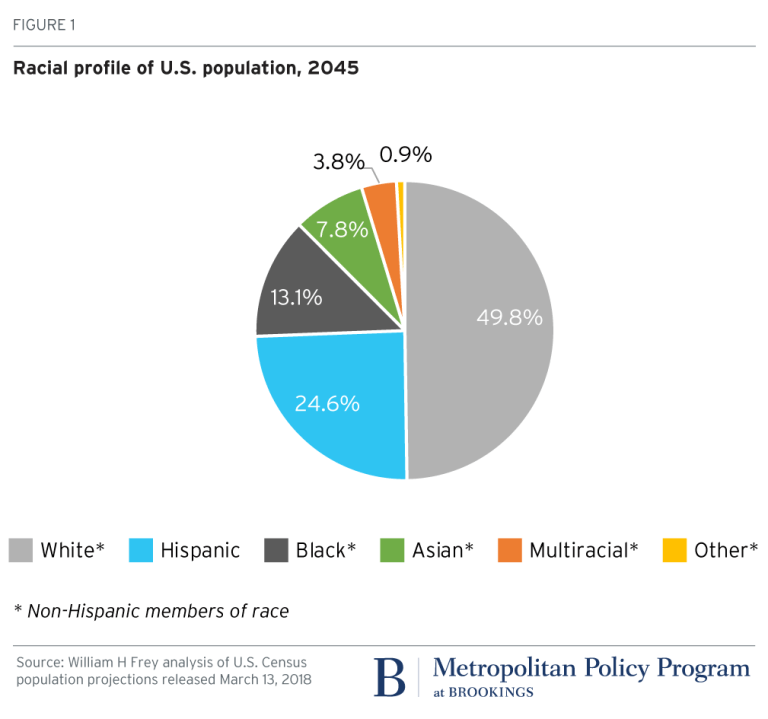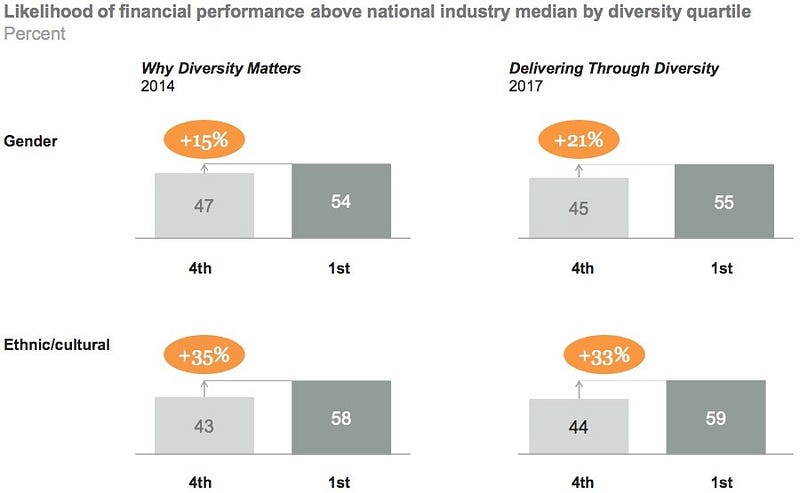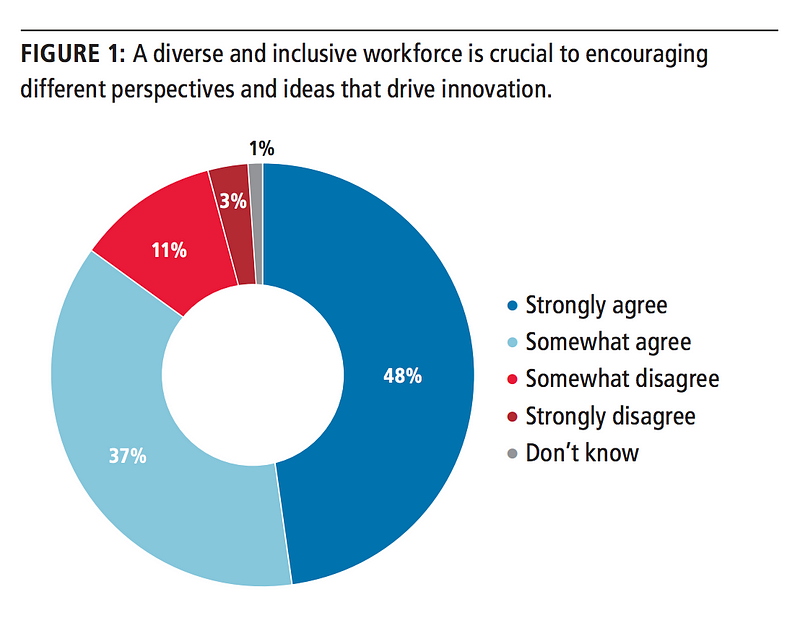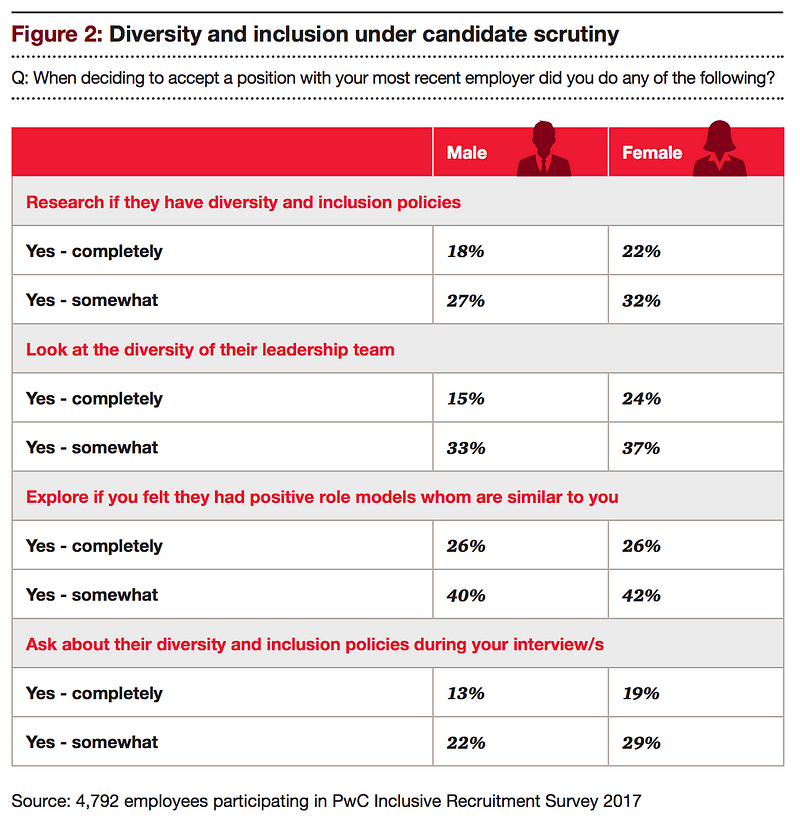Diversification of the workforce is an issue we can’t afford to ignore any longer. As the white population retires and ages, minorities are increasingly becoming the fuel for future economic growth in the US. White men — the traditional backbone of the American workforce — now occupy a smaller percentage of the population than ever before. In fact, the US is projected to become “minority white” by 2045.

Yet, despite these numbers, black families are increasingly moving toward a median household wealth of zero.
You can imagine the potentially dystopian scenario as these two trajectories continue. On the one hand, current minorities are the future majority of our workforce; on the other, they are not amassing wealth.
As business owners and employers, we have the chance to do our part in closing this gap and helping to avert the wealth crisis. But it’s not only about the future: hiring minority talent can bring immediate benefits to your business.
It’s important that we ramp up efforts to hire blacks and other minorities, so they can fill crucial jobs, enter the middle class and offer their perspectives in our organizations.
A focus on diversity is simply worth the effort. Organizations who hire minorities are experiencing great rewards. It’s been found that for every 1 percent increase in gender diversity, company revenue increases by 3 percent. Ethnic diversity produces even more pronounced revenue gains at 15 percent.

But it’s not just about revenue. Teams with more diverse perspectives and backgrounds simply work. Not only do they solve problems and make decisions faster than those with cognitively similar people, but they avoid the innovation-stifling echo chambers that often result from homogenous teams.
It’s a fact: Diverse organizations perform better.
If immediate revenue and productivity increases aren’t enough to sway you in the direction of diversification, there’s even more to consider.
Diversity will help you get creative.
Not surprisingly, diverse teams bring fresher ideas to the table. According to a Forbes study, “the best way to ensure the development of new ideas is through a diverse and inclusive workforce.” Your next feature or product launch might come from conversations inspired by varying backgrounds and opinions.

Diversity will help you better represent, understand and serve your customers.
Nearly half of recently surveyed employers said they are focusing on diversity to better represent their customers. Teams that are comprised of the very people they’re aiming to serve are well equipped to dominate their market. Today, only 35 percent of individuals with disabilities are in the American workforce — but disabled individuals control approximately $544 billion in annual disposable income. This leaves a lot to be desired in terms of representing interested (and important) demographics.
Additionally, communications strategies and materials that are both culturally sensitive and relevant will have a greater impact on society — and your marketing ROI.
Diversity also increases adaptability, making your team agile during times of great change. More varied perspectives allow your organization to transform and evolve with its surroundings, and this could mean the difference between staying afloat or going under in times of stress.
Diversity will help you hire and retain more talent.
Having a diverse team can drastically improve your future recruitment strategies. First, championing diversity may give your brand an edge among competitors who may still be lagging behind. One study showed that 61% of women and 48% of men assessed the diversity of company leadership when deciding to accept a job offer.

When it comes to engaging and retaining existing employees, any support you provide to minority groups can bring lasting benefits to your organization. Specific demographic groups are more productive, innovative and high performing when they are a part of strong employee networks — whether those networks are based on ethnicity, gender or sexual orientation.
Moving forward, we need to not only seek out opportunities but also address the challenges that come with increasing diversity in the workforce.
An opportunity as great as diversification is not without its challenges. Understanding them and being well equipped to manage them are crucial tasks for agile companies.
Integration of diverse perspectives is perhaps the biggest issue — and this spans differences in culture, working styles, communication and professional etiquette. Every measure should be taken to quash stereotypes and increase exchanges of ideas even amongst those who may be less inclined to participate.
After all, increasing diversity is not about reaching a quota or watching a percentage increase, although these signify positive advancements. It’s about fostering a sense of belonging and allowing skilled individuals to function at their highest level — no matter their cultural background.
You have nothing to lose in creating a diversification strategy within your organization. Planning your next steps today may earn you dramatic advantages much sooner than you ever thought possible, all the while putting you at the forefront of an important shift in the future of the American workforce.
- TMP Programmatic Jobs: Audience Extension - October 8, 2020
- Radancy’s Programmatic Jobs – Part 3: Business Intelligence - March 18, 2020
- Radancy’s Programmatic Jobs – Part 2: Budgeting Intelligence - February 19, 2020
- Radancy’s Programmatic Jobs – Part 1: Campaign Automation - January 28, 2020
- Putting Candidates at the Center of Your Recruitment Strategy - December 17, 2019
- In Pursuit of Perfection: Using Testing for Conversion Rate Optimization - November 22, 2019
- Job Content 101: How to Optimize Job Ads for Results - November 5, 2019
- Recruitment Automation: How to Automate Applicant Sourcing - October 22, 2019
- Recruitment Analytics 101: How to Collect and Analyze Data for Recruitment Success - September 11, 2019
- Recruitment Funnel: How to Optimize the Job Applicant Experience - August 19, 2019







